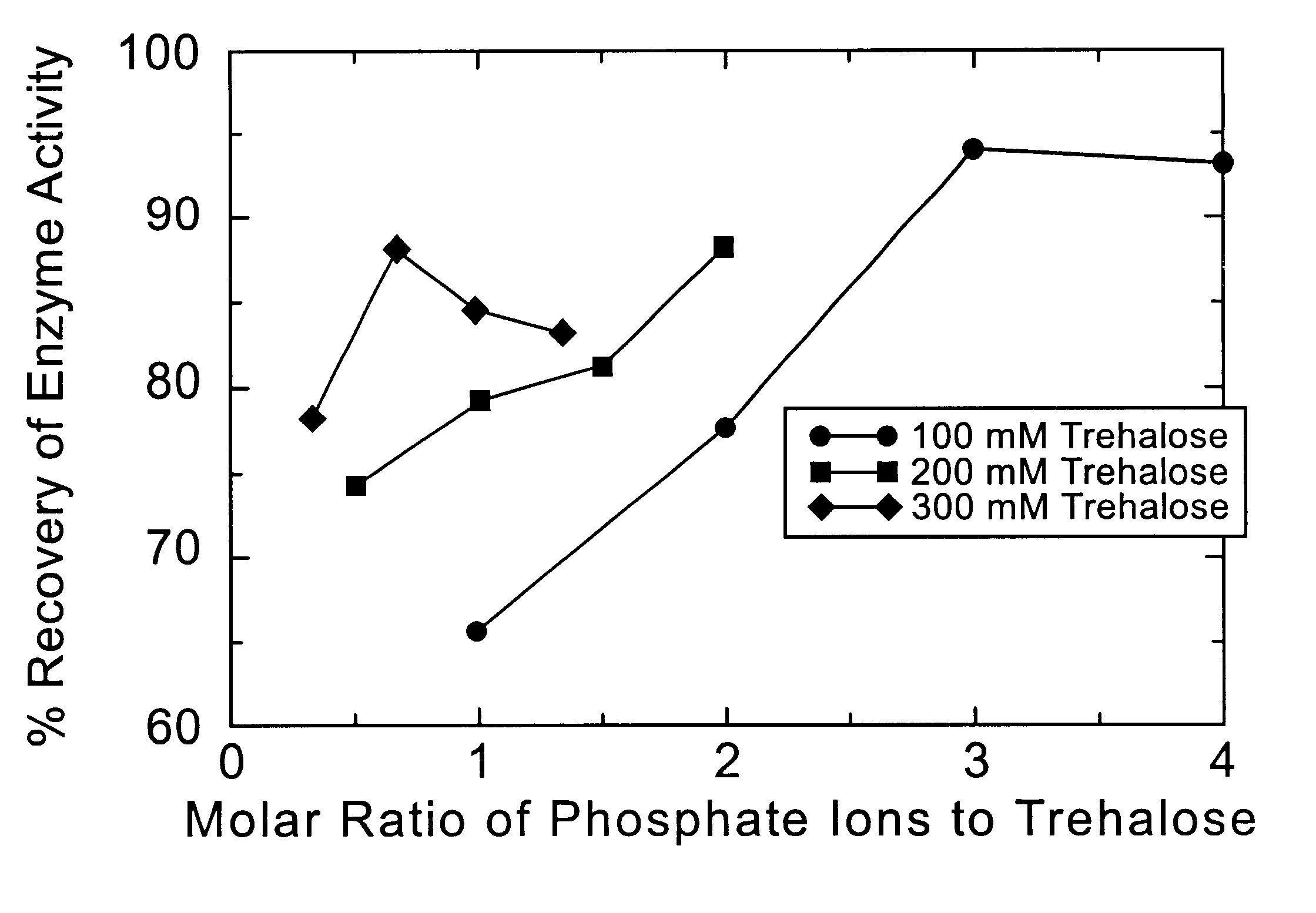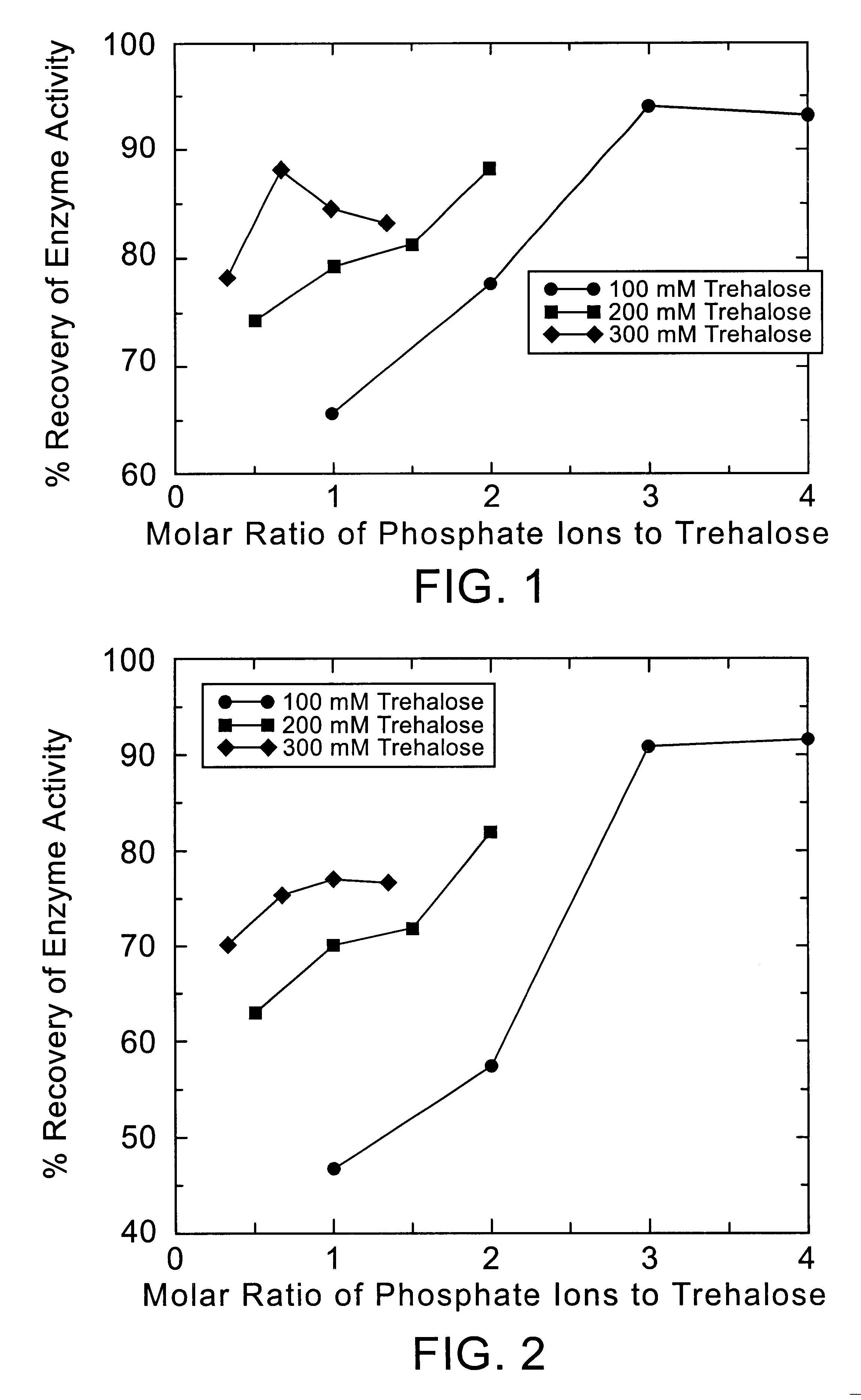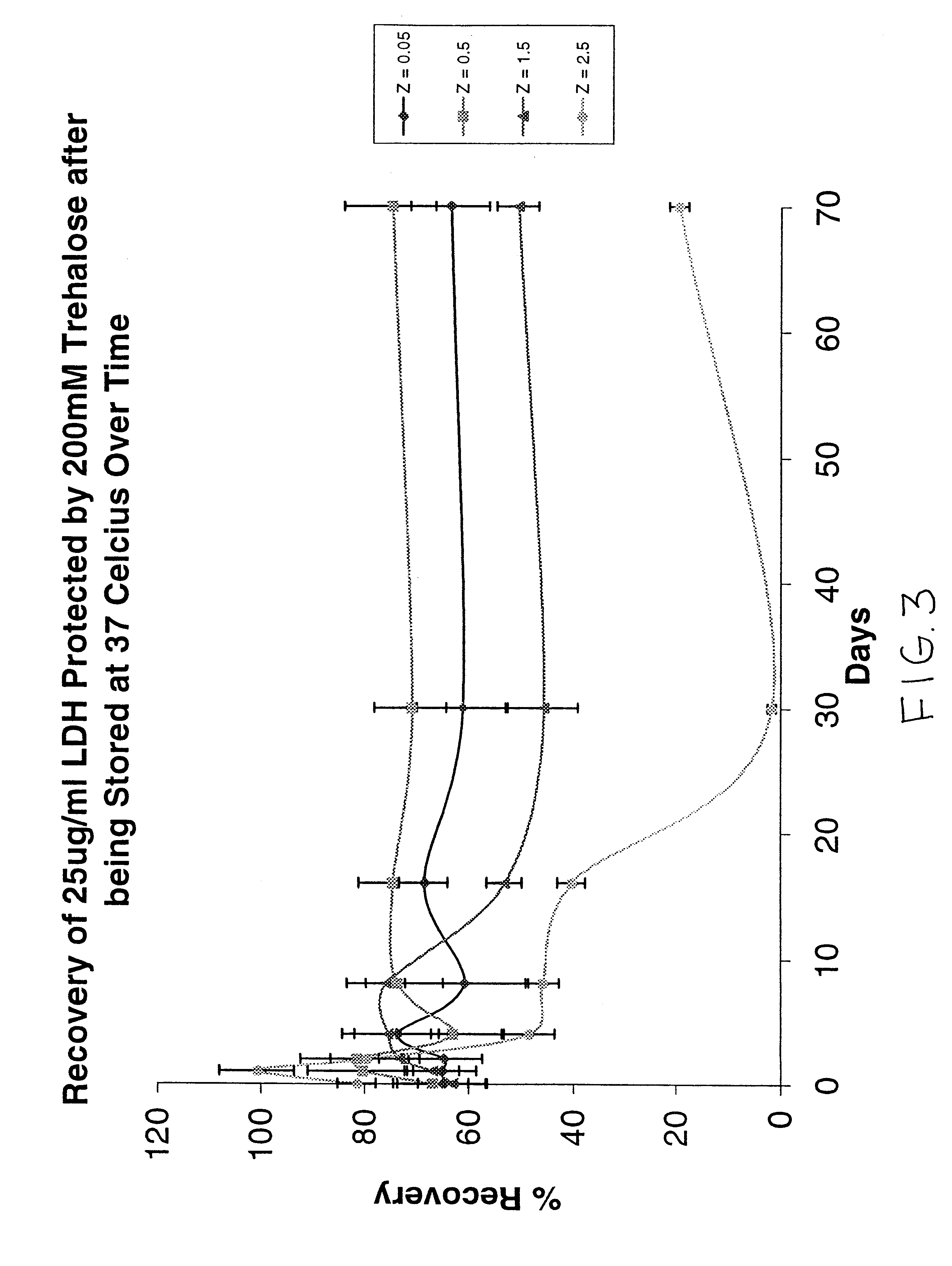Preservation and storage medium for biological materials
a biological material and storage medium technology, applied in the field of biological material preservation and storage media, can solve the problems of biological material denaturation, biological material denaturation, and the freezing step of this process can have undesirable side effects,
- Summary
- Abstract
- Description
- Claims
- Application Information
AI Technical Summary
Benefits of technology
Problems solved by technology
Method used
Image
Examples
example 2
The procedure of Example 1 was repeated, using phosphate, carbonate, or sulfate ions with polyhydroxy compounds in varying amounts. The results for a given set of samples are set forth below in Table 2, where the numbers represent the percent of original activity that was recovered upon rehydration. The "solution" column provides the amount of viable cells in a given preservation medium, with the amount of viable cells in the "cells alone" sample being defined as 100%.
example 3
The procedure of Example 1 was repeated, using preservation media containing various sources of phosphate ions in varying amounts, and varying amounts of trehalose, with the exception that the freeze-dried samples were dried to 50.degree. C. In addition, the residual water in the freeze-dried samples was measured by Karl Fischer (KF) analysis, and the glass transition temperature (T.sub.g) was obtained. The results for a given set of samples are set forth below in Table 3, where the numbers represent the percent of original activity that was recovered upon rehydration. The "solution" column provides the amount of viable cells in a given preservation medium, with the amount of viable cells in the "cells alone" sample being defined as 100%.
example 4
The procedure of Example 1 was repeated, using varying amounts of trehalose and different phosphate ion sources in the preservation medium, with the exception that the freeze-dried samples were dried to a temperature of 50.degree. C. In two samples, ethanol was added as a drying agent to the preservation medium, while in one sample, the L. acidophilus cells were "washed" (centrifuged, decanted and resuspended) to remove residual growth medium. Media containing different buffers were also tested. The results for a given set of samples are set forth below in Table 4, where the numbers represent the percent of original activity that was recovered upon rehydration. The "solution" column provides the amount of viable cells in a given preservation medium, with the amount of viable cells in the "cells alone" sample being defined as 100%.
PUM
 Login to View More
Login to View More Abstract
Description
Claims
Application Information
 Login to View More
Login to View More - R&D
- Intellectual Property
- Life Sciences
- Materials
- Tech Scout
- Unparalleled Data Quality
- Higher Quality Content
- 60% Fewer Hallucinations
Browse by: Latest US Patents, China's latest patents, Technical Efficacy Thesaurus, Application Domain, Technology Topic, Popular Technical Reports.
© 2025 PatSnap. All rights reserved.Legal|Privacy policy|Modern Slavery Act Transparency Statement|Sitemap|About US| Contact US: help@patsnap.com



